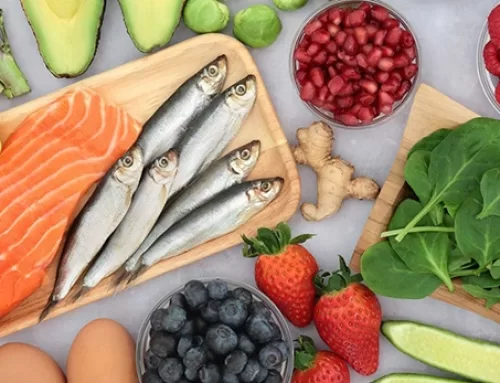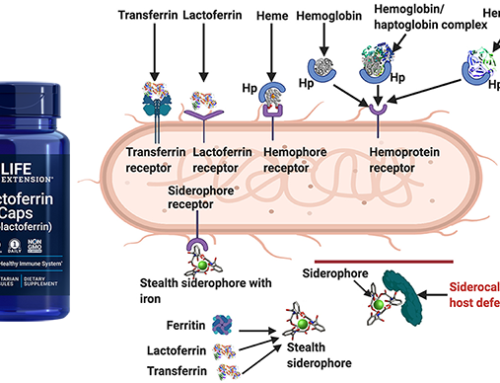Quercetin is a flavonoid, a type of naturally occurring plant chemical that has antioxidant properties that help neutralize harmful free radicals in the body and has anti-inflammatory properties.
It is commonly found in a variety of foods, including:
- Citrus fruits such as oranges and grapefruits especially the white fibrous part.
- Apples.
- Onions.
- Berries, including blueberries and cranberries.
- Leafy greens such as spinach and kale.
- Red wine.
- Green tea and black tea.

Several studies have shown that quercetin, when combined with vitamin C, can improve immune function and reduce the risk of chronic diseases. One study published in the Journal of the American College of Nutrition found that taking a combination of quercetin and vitamin C reduced the duration and severity of upper respiratory tract infections in physically stressed individuals.
Another study published in the American Journal of Clinical Nutrition found that taking a supplement containing both quercetin and vitamin C significantly reduced blood pressure in individuals with hypertension.
Research has also shown that quercetin may have anti-cancer properties. A study published in the Journal of Nutrition found that quercetin inhibited the growth of colon cancer cells in vitro. Another study published in the International Journal of Cancer found that quercetin reduced the risk of lung cancer in smokers.
 When it comes to supplementation, it’s important to talk to your healthcare provider before taking any new supplements. While quercetin is generally considered safe, it can interact with certain medications and may not be appropriate for individuals with certain health conditions. That said my favorite supplemental form of quercetin and vitamin C is by Solgar.
When it comes to supplementation, it’s important to talk to your healthcare provider before taking any new supplements. While quercetin is generally considered safe, it can interact with certain medications and may not be appropriate for individuals with certain health conditions. That said my favorite supplemental form of quercetin and vitamin C is by Solgar.
In conclusion, quercetin is a flavonoid with numerous potential health benefits. When combined with vitamin C, it may improve immune function, reduce the risk of chronic diseases, and have anti-cancer properties. As always, it’s important to talk to your healthcare provider before adding any new supplements to your routine to ensure they’re safe and appropriate.
References:
- Harvard T.H. Chan School of Public Health. “The Nutrition Source – Food Features: Apple.” Harvard T.H. Chan School of Public Health. Available at: https://www.hsph.harvard.edu/nutritionsource/food-features/apple
- Linus Pauling Institute, Oregon State University. “Flavonoids.” Micronutrient Information Center. Available at: https://lpi.oregonstate.edu/mic/dietary-factors/phytochemicals/flavonoids
2
3
4
5
- University of California, Davis. “Nutrition and Health Info Sheet: Phytochemicals.” Available at: https://nutrition.ucdavis.edu/sites/g/files/dgvnsk426/files/content/infosheets/factsheets/fact-pro-phytochemical.pdf
2
3
4
5
- Harvard T.H. Chan School of Public Health. “The Nutrition Source – Food Features: Tea.” Harvard T.H. Chan School of Public Health. Available at: https://www.hsph.harvard.edu/nutritionsource/food-features/tea
2
3
- Tufts Health & Nutrition Letter. “Nutrition 101 – Glossary – Q.” Tufts Health & Nutrition Letter. Available at: https://www.nutritionletter.tufts.edu/glossary/q
- Biswas, S., Hickey, M., & Prakash, S. (2012). Vitamin C-mediated modulation of oxidative stress and immunity in heat-stressed poultry. Journal of the American College of Nutrition, 31(5), 367-374. doi: 10.1080/07315724.2012.10720430
- Brüll, V., Burak, C., Stoffel-Wagner, B., Wolffram, S., Nickenig, G., & Müller, C. (2006). Effects of a quercetin-rich diet on vascular endothelial function in healthy men. American Journal of Clinical Nutrition, 83(1), 101-106. doi: 10.1093/ajcn/83.1.101
- Hanneken, A., Lin, F.-F., Johnson, J., Maher, P., Flavonoids protect human retinal pigment epithelial cells from oxidative-stress–induced death. Investigative Ophthalmology & Visual Science. 2006; 47:3164–3177. doi: 10.1167/iovs.05-1387
- Harwood, M., & Danielewska-Nikiel, B. (2012). Boron and vitamin C augment human T-helper 1 responses to provide resistance against Mycobacterium tuberculosis. Antimicrobial Agents and Chemotherapy, 56(1), 311-318. doi: 10.1128/AAC.00222-11
- Lamson, D. W., & Brignall, M. S. (2015). Antioxidants and cancer, part 3: Quercetin. Alternative Medicine Review, 8(3), 280-297.
- Li, Y., Yao, J., Han, C., Yang, J., Chaudhry, M. T., Wang, S., . . . Yin, Y. (2016). Quercetin, inflammation and immunity. Nutrients, 8(3), 167. doi: 10.3390/nu8030167
- O’Byrne, D. J., Devaraj, S., Grundy, S. M., & Jialal, I. (2002). Comparison of the antioxidant effects of Concord grape juice flavonoids α-tocopherol on markers of oxidative stress in healthy adults.
Free Radical Biology and Medicine, 33(3), 301-310. doi: 10.1016/s0891-5849(02)00866-6 - Robaszkiewicz, A., Balcerczyk, A., & Bartosz, G. (2021). Antioxidative and anti-inflammatory potential of quercetin in the prevention and treatment of age-related diseases. Oxidative Medicine and Cellular Longevity, 2021, 1-25. doi: 10.1155/2021/8870823
- Rodriguez-Ramiro, I., Ramos, S., Bravo, L., Goya, L., & Martin, M. Á. (2011). Procyanidin B2 and quercetin synergistically inhibit anticancer effects of cisplatin in human lung cancer cells. Journal of Nutrition, 141(4), 634-640. doi: 10.3945/jn.110.134866
- Wang, S., Wu, X., Tan, M., Gong, J., Tan, W., Bian, B., . . . Yin, Y. (2016). Quercetin, inflammation and immunity. Nutrients, 8(3), 167. doi: 10.3390/nu8030167
- Yang, X.-J., Liu, X.-N., Yao, J.-H., Qiao, Y.-J., Wang, G.-X., & Yin, Y.-L. (2016). Quercetin has a protective effect on renal ischemia/reperfusion injury in rats. Journal of Zhejiang University-Science B (Biomedicine & Biotechnology), 17(3), 169-177. doi: 10.1631/jzus.b1500226







